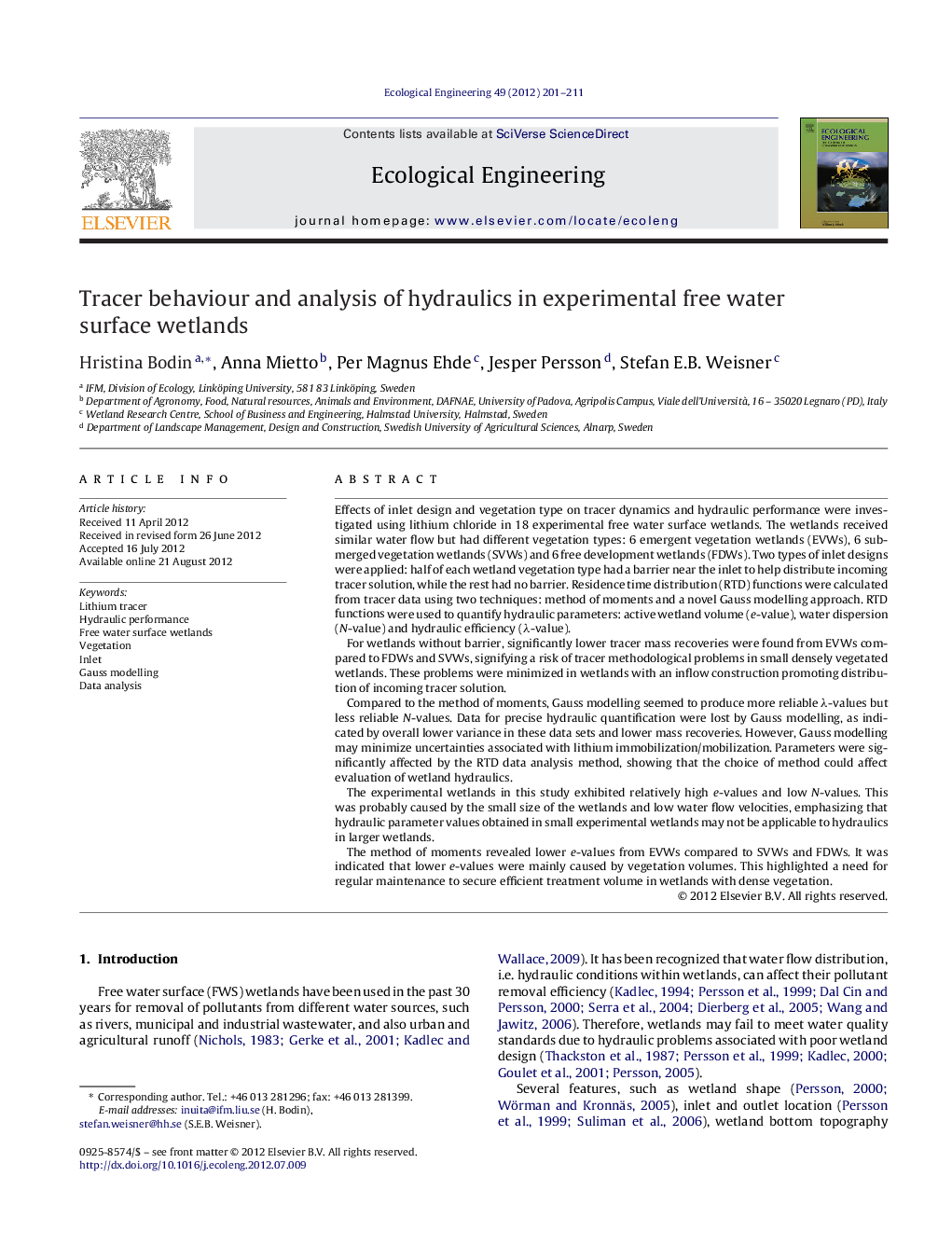| کد مقاله | کد نشریه | سال انتشار | مقاله انگلیسی | نسخه تمام متن |
|---|---|---|---|---|
| 4389905 | 1618049 | 2012 | 11 صفحه PDF | دانلود رایگان |

Effects of inlet design and vegetation type on tracer dynamics and hydraulic performance were investigated using lithium chloride in 18 experimental free water surface wetlands. The wetlands received similar water flow but had different vegetation types: 6 emergent vegetation wetlands (EVWs), 6 submerged vegetation wetlands (SVWs) and 6 free development wetlands (FDWs). Two types of inlet designs were applied: half of each wetland vegetation type had a barrier near the inlet to help distribute incoming tracer solution, while the rest had no barrier. Residence time distribution (RTD) functions were calculated from tracer data using two techniques: method of moments and a novel Gauss modelling approach. RTD functions were used to quantify hydraulic parameters: active wetland volume (e-value), water dispersion (N-value) and hydraulic efficiency (λ-value).For wetlands without barrier, significantly lower tracer mass recoveries were found from EVWs compared to FDWs and SVWs, signifying a risk of tracer methodological problems in small densely vegetated wetlands. These problems were minimized in wetlands with an inflow construction promoting distribution of incoming tracer solution.Compared to the method of moments, Gauss modelling seemed to produce more reliable λ-values but less reliable N-values. Data for precise hydraulic quantification were lost by Gauss modelling, as indicated by overall lower variance in these data sets and lower mass recoveries. However, Gauss modelling may minimize uncertainties associated with lithium immobilization/mobilization. Parameters were significantly affected by the RTD data analysis method, showing that the choice of method could affect evaluation of wetland hydraulics.The experimental wetlands in this study exhibited relatively high e-values and low N-values. This was probably caused by the small size of the wetlands and low water flow velocities, emphasizing that hydraulic parameter values obtained in small experimental wetlands may not be applicable to hydraulics in larger wetlands.The method of moments revealed lower e-values from EVWs compared to SVWs and FDWs. It was indicated that lower e-values were mainly caused by vegetation volumes. This highlighted a need for regular maintenance to secure efficient treatment volume in wetlands with dense vegetation.
Journal: Ecological Engineering - Volume 49, December 2012, Pages 201–211